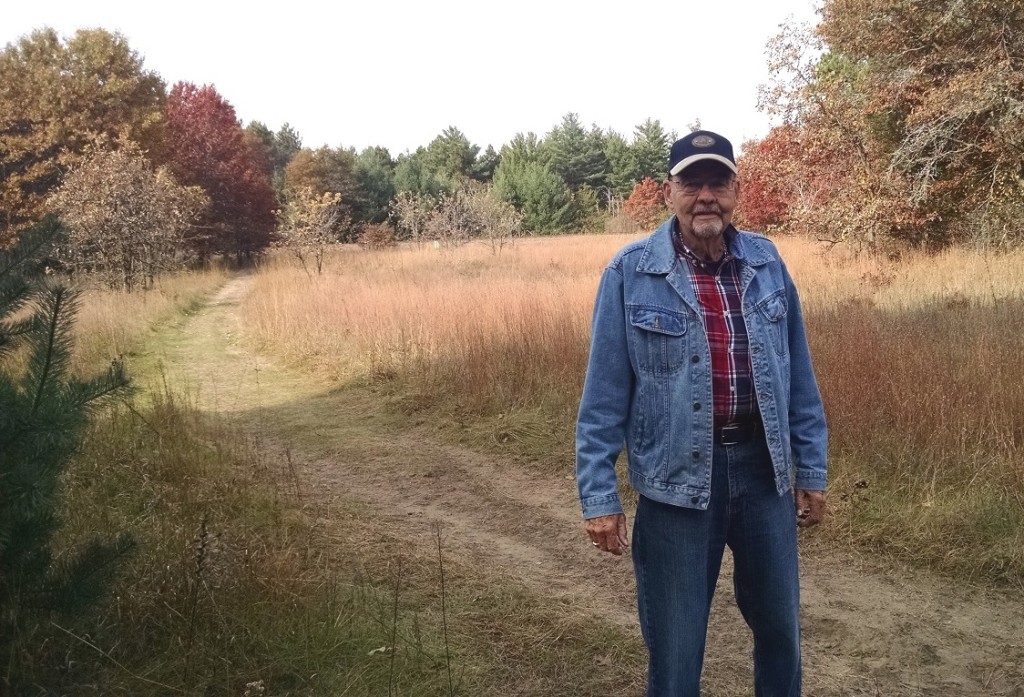Golf’s highest-profile denizen up Minnesota Highway 65 in the Cambridge area is Purple Hawk Country Club. The club, situated 3.5 miles north of downtown Cambridge, opened on May 25, 1970, and purportedly was named after an Ojibwa warrior who was skilled at the game of lacrosse. That’s what they say, though I frankly believe that like I believe Kim Jong Il really did shoot that reputed round of 38-under par 34 with 11 aces in the 1990s at the Pyongyang Golf Complex.
Regardless, Purple Hawk is regarded highly enough to attract Twin Citians on day trips and serve as a destination for northern Minnesotans looking to play their first round of the year in springtime. Once its greens freeze over in a few weeks, it will have 46 seasons in the books.
Purple Hawk’s 1970 start date stands as close to a midpoint for golf history in the Cambridge area. There was plenty of activity before that, and there has been activity since.
A little before Purple Hawk: PH’s predecessor lay two miles to the west, within a few hundred yards of the hairpin turn in the Rum River that sends the river flowing from northward to southward. The predecessor was known as Cambridge Golf Club, though at least two early 1960s telephone directories called it Cambridge Country Club. The club — but not the course — ceased to exist when much of its membership, looking to expand its milieu from nine to 18 holes, established Purple Hawk. The Cambridge GC grounds, according to a 1993 Isanti County Traveler story, were sold in September 1968 to Ed Chies, and that course operates today as Grandy Nine.
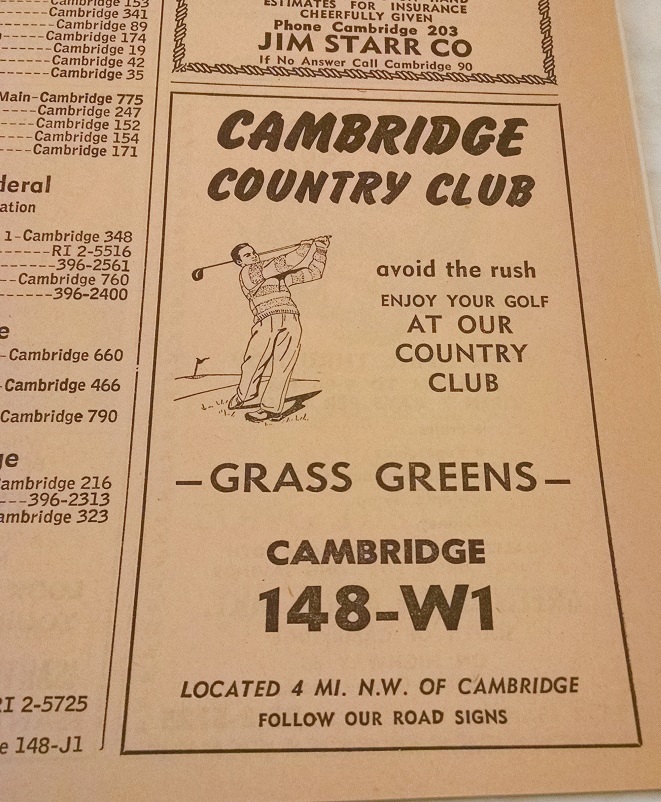
There is conflicting information as to the age of the Grandy Nine site. Though a website lists the course’s founding date as 1960, the Traveler story (a more credible source, I would think) reported that the Cambridge GC/Grandy Nine site began operation as a golf course “shortly after World War II,” with grass greens added in 1954 and clubhouse and course improvements following in the early to mid-1960s. Further confusing the issue is that Cambridge Country Club had a listing in the 1961 and ’62 phone books but not in 1960.
But unless I am mistaken, and I have been mistaken only 3,479,785 times before this (and that’s just in the past month), Cambridge Golf Club, Cambridge Country Club and Grandy Nine were the same golf course, just with different names.
Well before Purple Hawk: At last, we come to the real deal: a lost golf course.
Twisted logic? Maybe in your world, but not in mine. Lost courses rule.
This lost course, like Purple Hawk, is visible from Highway 65, albeit on the other end of town and with a fair amount of imagination required. (Don’t tell me that’s a contradiction. Just shut up and read.)
The course was called Shady Oaks, and it had a decent run considering its modest background.
Shady Oaks’ resting place can be seen among the shady oaks (duh) on the southern edge of Cambridge, in an area known as Edgewood. The golf course, the 1993 Isanti County Traveler reported, “was basically a pasture on the farm owned by Nils Carlson, Sr. … In the late 1920s and early 1930s when Nils Sr. wasn’t farming anymore and the boys (sons Nils Jr. and Oscar) were occupied in other things, it was decided to use the pasture land as a golf course.”
Shady Oaks’ first hole was a few yards west of what was Highway 65 then and now is Davenport Street Northeast. Its southern edge was nearby — what is now 309th Lane Northeast, a short street that leads to the century-plus-old Carlson farmhouse that still stands and still is owned by Carlson descendants. Its western border was on or near the BNSF Railway tracks, and its northern border was what is now 311th Avenue Northeast. (The golf course, contrary to the same issue of the Isanti County Traveler, did not venture as far north as the former site of the District 3 School, i.e. near the Main Street exit off Highway 65. Three people who remembered the golf course grounds unequivocally said the course’s northern border was basically the southern edge of the woods in Edgewood, or what is now 311th Avenue.)
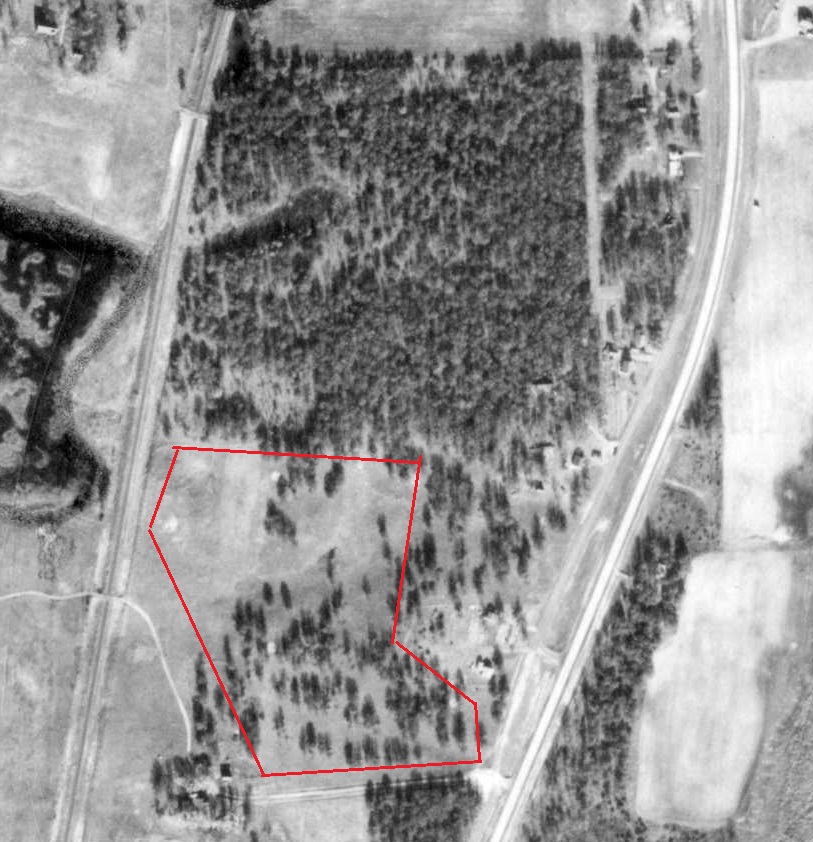
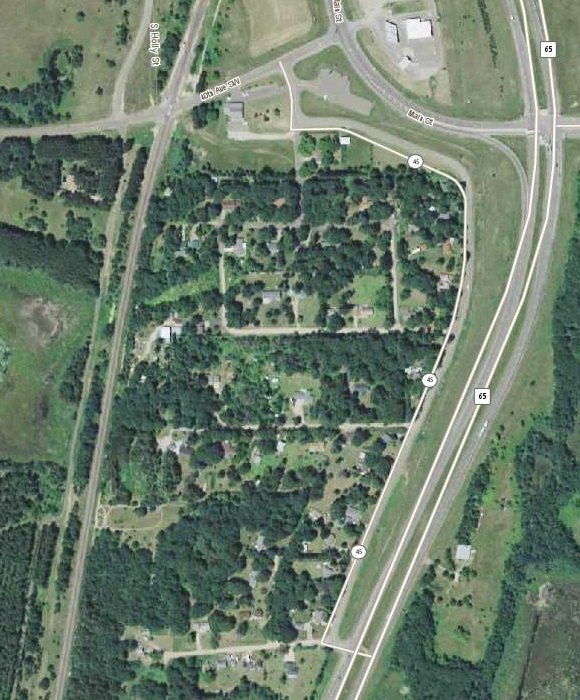
Judging from the best reconstruction I can put together — and this has been a tough acorn to crack — Shady Oaks had two clubhouses at separate times. No, wait a minute. Clubhouse really isn’t the right word. They were more like receptacles.
The first was Nils Sr.’s house — or hands, actually. “Hole No. 1, par 4,” the Isanti County Traveler reported, “golfers would tee off near the highway and drive west 226 yards toward the farm buildings where the green was located. As golfers approached the green, Nils Sr. would come out from his house and collect a dime as the admission charge for playing the course.”
Nils perhaps grew weary of this. At least two people I talked with remembered a shack near the first tee — at the corner of the old Highway 65 (now Davenport Street) and 309th Lane. Snacks, they said, were available at the shack, and golfers presumably paid their nominal greens fees there, too.
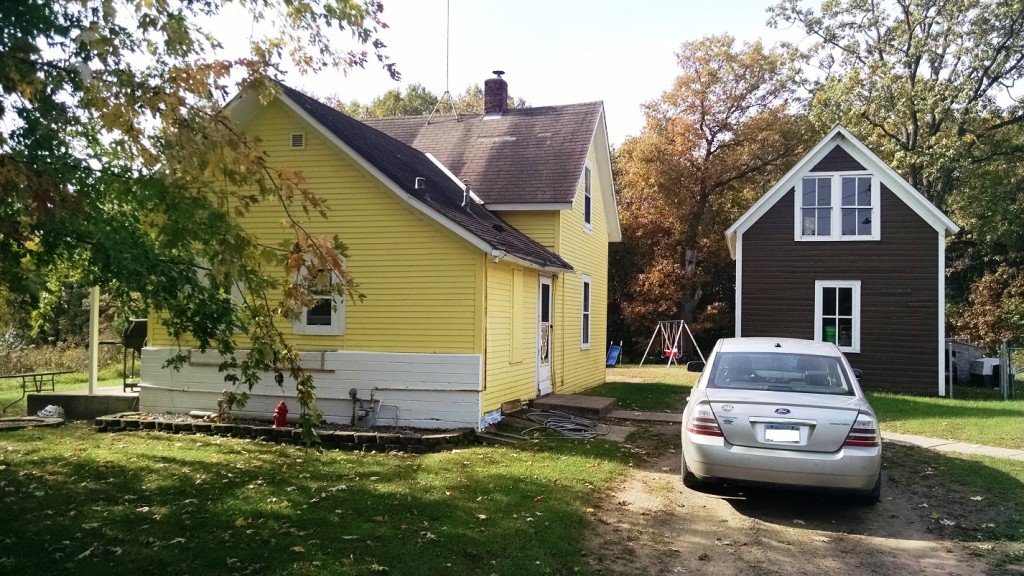
After the first hole, the course turned northward. The Traveler story said so, and so did Roger Carlson of Cambridge, who lives about a mile from the old course and played it as a youth. Carlson, 85, is a retired Cambridge photography professional and son of the late Charles Carlson, whose brothers Nils Jr. and Oscar operated Shady Oaks.
Roger Carlson and I spent about a half-hour in mid-October tromping through the grounds north and east of the Carlson home, in hopes that Roger’s memories of Shady Oaks might be jogged. They weren’t, unfortunately, though Roger remembered carrying his hickory-shafted irons around the place and was fairly certain that the second hole did indeed go north. Beyond that, the combination of old growth and new growth on the old Shady Oaks grounds made it impossible for Roger to definitively identify any of the routing.
Roger Carlson of Cambridge, standing near what likely was the second green on Shady Oaks. Railroad tracks in front of green trees in the background were near the western border of the course. It’s unclear whether the land between Carlson and the tracks was part of the course, but best guess is that it was.
Like Roger Carlson, three or four other people I talked with remembered that Shady Oaks once existed there, but they retained no vivid memories of the course. Most said the course lasted until shortly after World War II; Roger Carlson said he thought it remained open until close to 1950. The Isanti County Traveler story reported that Shady Oaks was a par-29 layout with sand greens, and that fits with both the relatively small parcel of land it occupied and the old aerial photos which almost certainly show at least three or four sand-green sites within about five years of the course’s closing.
The departure of Shady Oaks would roughly coincide with the starting date of Cambridge Country Club, as reported by the Isanti County Traveler. Whether there are direct connections between those two events isn’t known, but it does establish a fairly continuous history of golf in Cambridge-Isanti area from about 1930 until the present.
Thanks to the Isanti County Historical Society for providing information on the county’s lost courses.
Next post: The lost course in nearby Isanti.
Latest posts by Joe Bissen (see all)
- Another lost routing: Hilltop, Columbia Heights - June 19, 2024
- Two lost routes: First, Antlers Park - June 17, 2024
- Tree trouble and townball: Naeseth Country Club, Wanamingo - May 6, 2024
